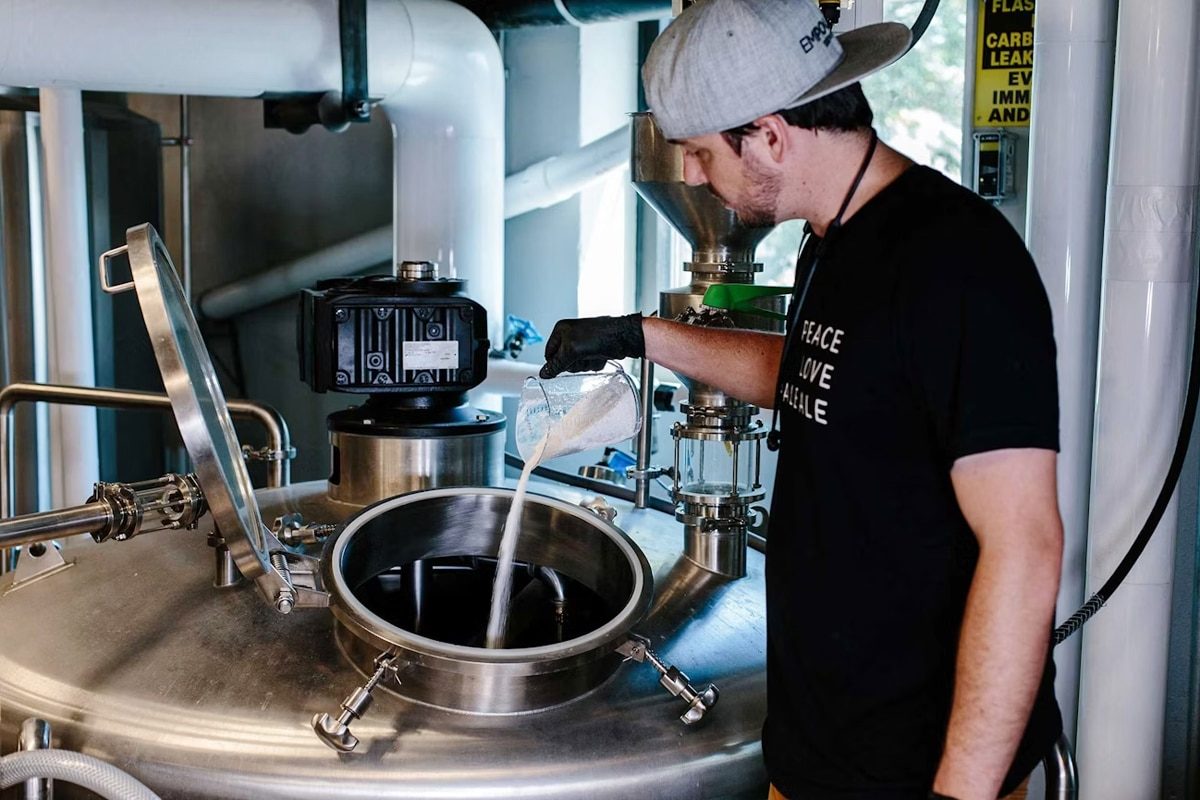
What Can Be Used To Clean Brewery Equipment?
In the intricate world of brewing, where every flavor note and aroma is meticulously crafted, cleanliness reigns supreme. Behind the scenes of every successful brewery operation lies a robust cleaning regimen, ensuring that every piece of equipment gleams with sterilized perfection. From towering fermentation tanks to the smallest of valves, each component plays a crucial role in the production of exceptional beer.
In this comprehensive guide, we delve into the arsenal of cleaning agents that brewers rely on to maintain the pristine condition of their equipment. From alkaline cleaners that tackle stubborn organic residues to specialized solutions for eliminating biofilms, we’ll explore the diverse array of options available. Join us as we uncover the secrets to brewery equipment cleaning so breweries can adhere to the highest hygiene standards and take their craft to new heights.
Complete Guide
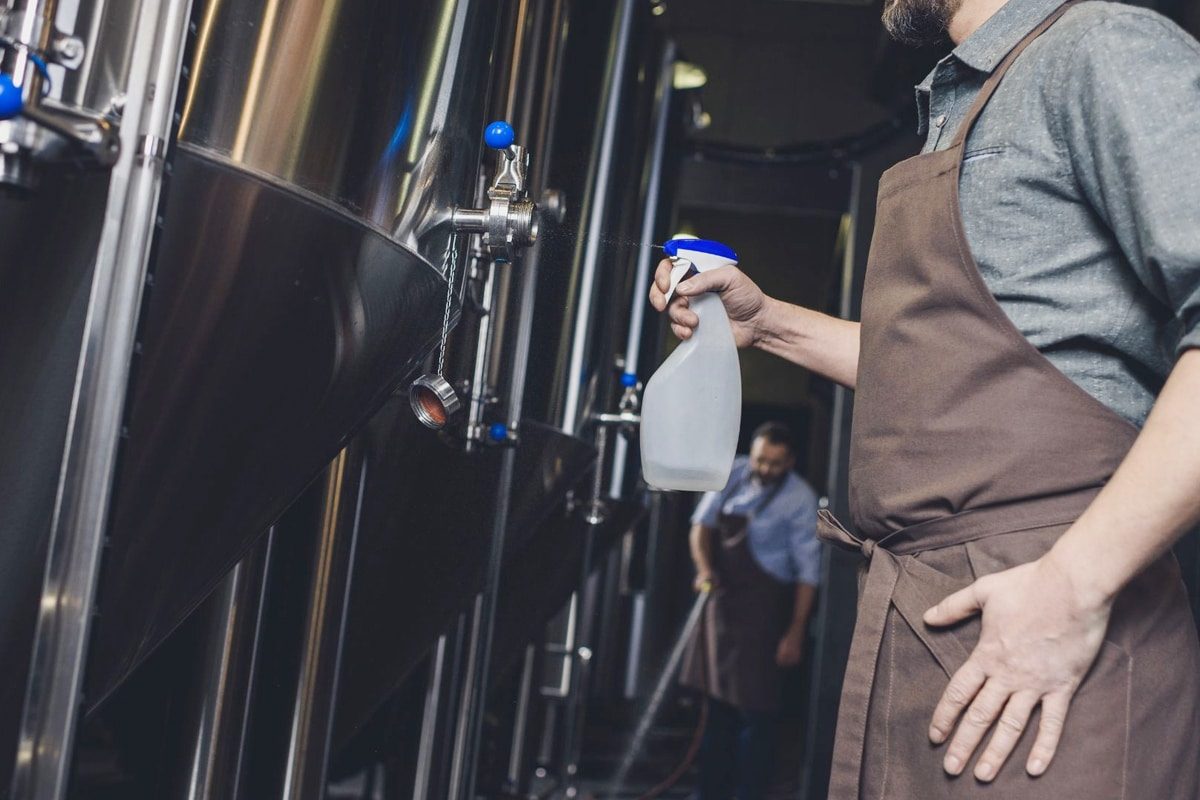
The Importance of Cleaning Brewery Equipment
In the alchemical world of brewing, where science meets art, the cleanliness of brewery equipment stands as the unsung hero, a guardian of the liquid gold within. Beyond the gleaming steel and polished copper, the meticulous upkeep of brewing vessels and pipelines is the linchpin that separates mediocre brews from masterpieces. The importance of cleaning brewery equipment reverberates through every step of the brewing process, influencing not only the flavor and aroma but also the safety and longevity of the equipment itself.
Ensuring Quality
Contaminants, from unwanted yeast strains to lingering residues, can wreak havoc on the delicate balance of flavors. Clean equipment is the canvas upon which brewers paint their flavor palette, ensuring each sip is a harmonious symphony of tastes, untainted by unintended influences.
Safeguarding Consistency
Consistency is the hallmark of a reputable brewery. Regular, thorough cleaning routines establish a baseline, allowing brewers to replicate successful batches. Clean equipment ensures that each brew meets the established standards, providing customers with a reliable and expected flavor profile.
Prolonging Equipment Longevity
Brewing equipment represents a significant investment. Regular cleaning not only prevents contamination-related mishaps but also extends the lifespan of the equipment. From fermentation tanks to kegs, a well-maintained arsenal ensures a brewery’s operational efficiency and financial sustainability.
Mitigating Contamination Risks
Microbial contaminants, biofilms, and mineral deposits are nefarious foes that can compromise the integrity of beer. The thorough cleaning of equipment is a preemptive strike against these threats, reducing the risk of off-flavors, spoilage, and potential health hazards.
Enhancing Safety
A clean brewery is a safe brewery. Beyond the quality of the beer produced, the health and safety of both consumers and brewery personnel are at stake. Proper cleaning practices, coupled with the use of appropriate cleaning agents, mitigate the risk of bacterial growth and other potential hazards.
Regulatory Compliance
In an industry governed by stringent regulations, adherence to cleanliness standards is not just good practice; it’s a legal imperative. Meeting and exceeding cleanliness expectations ensures compliance with health and safety regulations, safeguarding the brewery’s reputation and securing its place in the market.
In essence, the importance of cleaning brewery equipment extends far beyond mere hygiene. It is the cornerstone upon which the entire brewing process rests, influencing the sensory experience of consumers, the operational efficiency of the brewery, and the longevity of the equipment. As we delve deeper into the world of brewery equipment cleaning, we unravel the layers of this crucial practice, understanding that cleanliness is not just a routine but a commitment to brewing excellence.
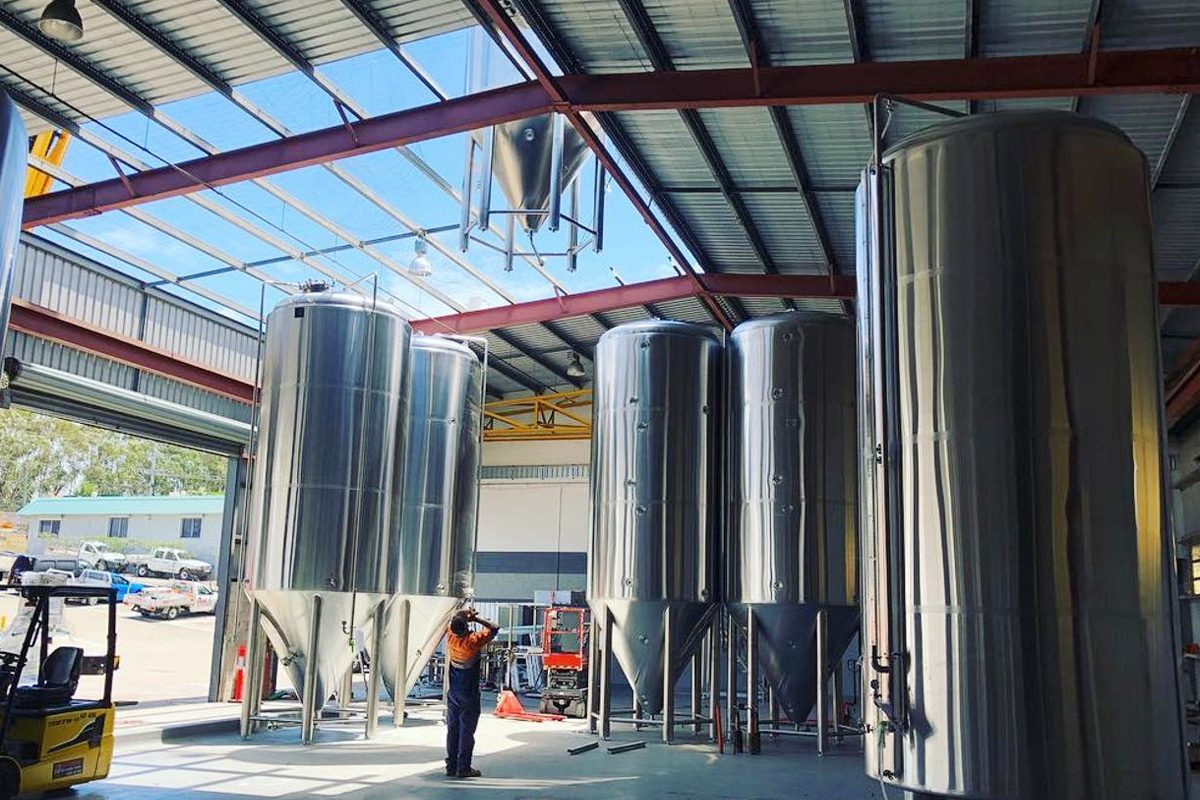
Basic Principles of Brewery Equipment Cleaning
In the intricate dance of brewing, where precision and consistency reign supreme, the basic principles of brewery equipment cleaning serve as the cornerstone of success. From the towering fermentation tanks to the smallest valves, every piece of equipment plays a vital role in the creation of exceptional beer. Understanding and adhering to these principles ensures that each batch is crafted with care and precision, free from contaminants and unwanted flavors.
Pre-Rinse
The cleaning process begins with a thorough pre-rinse, where large debris and residues are flushed away. This initial step lays the groundwork for effective cleaning by removing surface contaminants and loosening stubborn deposits.
Disassembly
To achieve a truly clean result, it is essential to dismantle equipment wherever possible. Valves, fittings, and other components should be taken apart to allow for access to all surfaces. This facilitates thorough cleaning and ensures that no hidden pockets of contamination remain.
Soaking
Soaking equipment in a cleaning solution is a highly effective way to break down stubborn deposits and residues. Whether using alkaline, acid, or enzymatic cleaners, allowing parts to soak ensures that even the most tenacious soils are loosened and dissolved.
Brushing
Brushing is a critical step in the cleaning process, especially for removing residues that have adhered to surfaces. Nylon or stainless steel brushes are commonly used to scrub away deposits, ensuring that equipment is thoroughly cleaned inside and out.
Rinsing
Proper rinsing is essential to remove cleaning agents and residues from equipment surfaces. Thorough rinsing ensures that no traces of cleaning solution remain, preventing off-flavors and ensuring the purity of the final product.
Inspection
After cleaning, equipment should be thoroughly inspected for any signs of damage or remaining residues. This allows brewers to identify and address any issues promptly, ensuring that equipment is in optimal condition for the next brewing cycle.
Sanitization
While cleaning removes visible soils and contaminants, sanitization is necessary to eliminate microorganisms that may remain on equipment surfaces. Using appropriate sanitizers ensures that equipment is free from harmful bacteria and yeast, safeguarding the quality and safety of the beer.
By adhering to these basic principles of brewery equipment cleaning, brewers can uphold the highest standards of cleanliness and quality in their operations. From meticulous pre-rinsing to a thorough inspection, each step plays a crucial role in ensuring that equipment is maintained in pristine condition, allowing brewers to create an exceptional beer with confidence and consistency.
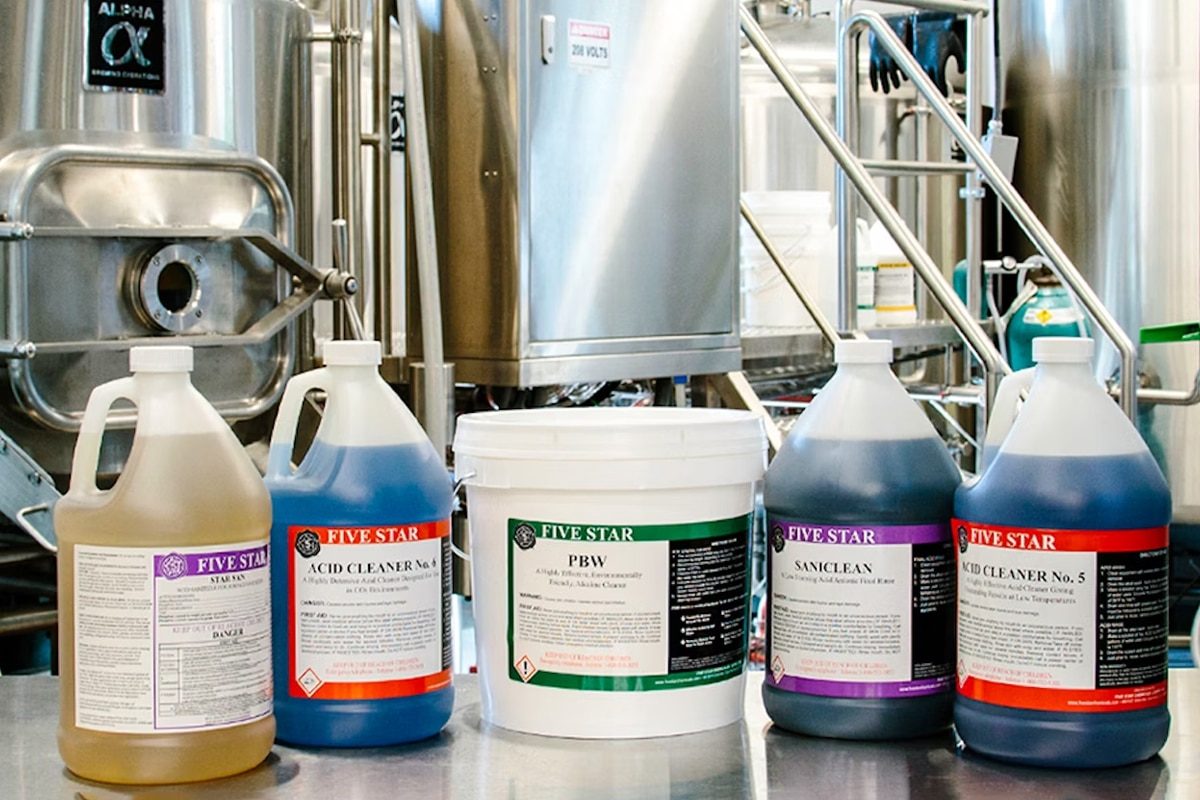
Commonly Used Cleaning Agents
In the labyrinthine world of brewing, where precision and purity are paramount, the choice of cleaning agents wields immense power. From dissolving stubborn residues to vanquishing microbial threats, the arsenal of cleaning agents available to brewers is as diverse as the flavors they craft. Let’s embark on a journey through the world of brewery sanitation, exploring the common cleaning agents that form the cornerstone of equipment maintenance.
Alkaline Cleaners
Alkaline cleaners, often containing sodium hydroxide (caustic soda) or potassium hydroxide, are revered for their ability to tackle organic residues with ease. From proteinaceous deposits to sugars and starches, alkaline cleaners excel in breaking down stubborn contaminants, leaving brewing equipment pristine and ready for the next batch.
Acid Cleaners
Acid cleaners play a pivotal role in combating mineral deposits and beer stone, the bane of every brewer’s existence. Phosphoric acid, citric acid, and nitric acid are among the common ingredients found in acid cleaners. Their acidic properties dissolve calcium oxalate and other mineral precipitates, ensuring that fermentation tanks and kegs remain free from scale buildup.
Oxidizing Cleaners
Hydrogen peroxide and peracetic acid solutions are heralded as potent oxidizing cleaners, wielding the power to obliterate microbial threats with ruthless efficiency. These agents penetrate biofilms, disrupting the protective layers that harbor bacteria and yeast. Oxidizing cleaners are indispensable allies in the battle against contamination, ensuring that brewing equipment remains sanitized and safe.
Chlorinated Cleaners
Chlorine-based cleaners, once a staple in brewery sanitation, have fallen out of favor in recent years due to concerns about off-flavors and potential reactions with beer residues. While chlorine bleach remains an effective sanitizer, its harsh nature and tendency to impart unwanted flavors have led brewers to explore alternative options.
Enzymatic Cleaners
Enzymatic cleaners harness the power of enzymes to break down organic soils and residues. Proteases target proteinaceous deposits, while amylases tackle starches and carbohydrates. Enzymatic cleaners are particularly effective in cleaning equipment with intricate surfaces, such as hoses and heat exchangers, where mechanical scrubbing may be impractical.
Specialty Cleaners
Beyond the traditional cleaning agents, a myriad of specialty cleaners cater to specific cleaning challenges encountered in breweries. From caustic-based solutions for heavy-duty cleaning to surfactant-based detergents for gentle surface cleaning, the options are vast. Brewers often tailor their cleaning regimen to suit the unique requirements of their equipment and brewing processes.
Sanitizers
While not strictly cleaning agents, sanitizers play a crucial role in maintaining brewery hygiene. Compounds such as quaternary ammonium compounds (quats) and iodophors are commonly used as sanitizers, effectively reducing microbial populations on surfaces. Proper sanitation is the final step in the cleaning process, ensuring that brewing equipment is primed for the production of safe and flavorful beer.
As brewers navigate the vast landscape of cleaning agents, the selection of the appropriate cleaner hinges on various factors, including the type of residue to be removed, the material composition of the equipment, and considerations for environmental impact and safety. By leveraging the diverse arsenal of cleaning agents available, brewers uphold the highest standards of hygiene and ensure the integrity of their craft, one immaculately clean vessel at a time.
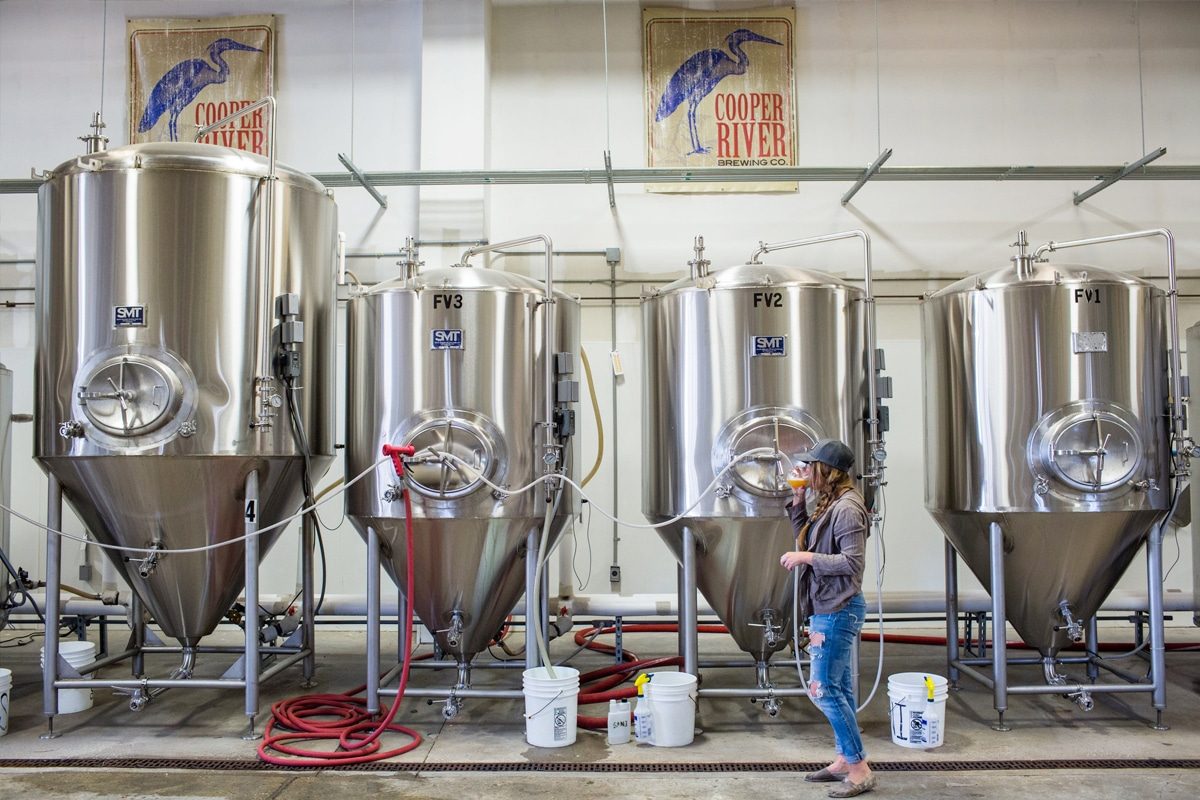
Equipment-Specific Cleaning Techniques
In the intricate ecosystem of a brewery, each piece of equipment plays a unique role in the alchemical process of brewing. From fermentation tanks to kegs and draft lines, the diversity of brewing gear demands specialized cleaning techniques to ensure pristine conditions and optimal performance. Let’s explore the equipment-specific cleaning techniques that brewers employ to maintain the sanctity of their equipment and elevate the quality of their brews.
Fermentation Tanks
- Cleaning Approach: Fermentation tanks, the heart of the brewing operation, require meticulous cleaning to remove organic residues and prevent microbial contamination.
- Technique: A combination of alkaline and acid cleaners is often employed to address both organic and mineral deposits effectively.
- Process: After a thorough pre-rinse, the tanks are soaked in an alkaline cleaning solution to dissolve organic residues. This is followed by an acid-cleaning step to remove mineral deposits and beer stones. Mechanical scrubbing may be necessary for stubborn deposits.
Kegs and Draft Lines
- Cleaning Approach: Kegs and draft lines are critical components in delivering beer to consumers, making their cleanliness essential for preserving flavor integrity.
- Technique: Regular cleaning and sanitizing of kegs and draft lines are paramount to prevent bacterial growth and off-flavors.
- Process: Kegs are typically soaked in a cleaning solution to break down residues, followed by thorough rinsing. Draft lines are flushed with cleaning solution and water using a pump or pressurized cleaning system.
Heat Exchangers
- Cleaning Approach: Heat exchangers are prone to protein and yeast deposits, necessitating specialized cleaning techniques to maintain efficiency.
- Technique: Enzymatic cleaners are the preferred choice for removing protein and yeast residues from heat exchangers.
- Process: Heat exchanger plates are dismantled, and the components are soaked in an enzymatic cleaning solution to break down organic deposits. Mechanical agitation or brushing may be necessary for thorough cleaning.
Brewing Utensils and Small Equipment
- Cleaning Approach: Hoses, valves, and other small equipment require regular cleaning to prevent cross-contamination and ensure product quality.
- Technique: Alkaline or enzymatic cleaners are commonly used for cleaning utensils and small equipment, followed by thorough rinsing.
- Process: Equipment is soaked in a cleaning solution, ensuring that all surfaces are adequately covered. Brushes or scrub pads may be used to remove stubborn residues.
Specialty Equipment
- Cleaning Approach: Some brewery equipment, such as filters and centrifuges, may require specialized cleaning techniques due to their complex design and functionality.
- Technique: Cleaning methods for specialty equipment vary based on manufacturer recommendations and the specific cleaning challenges posed by each piece of equipment.
- Process: Brewers consult equipment manuals and work closely with manufacturers to develop customized cleaning protocols tailored to the unique requirements of each piece of equipment.
By embracing equipment-specific cleaning techniques, brewers can ensure the longevity and optimal performance of their equipment while upholding the highest standards of brewery hygiene. Through meticulous attention to detail and the judicious selection of cleaning agents, breweries can safeguard the purity of their brews and maintain the trust and loyalty of their customers. As we continue our exploration of brewery equipment maintenance, these equipment-specific cleaning techniques will serve as invaluable tools in the pursuit of brewing excellence.
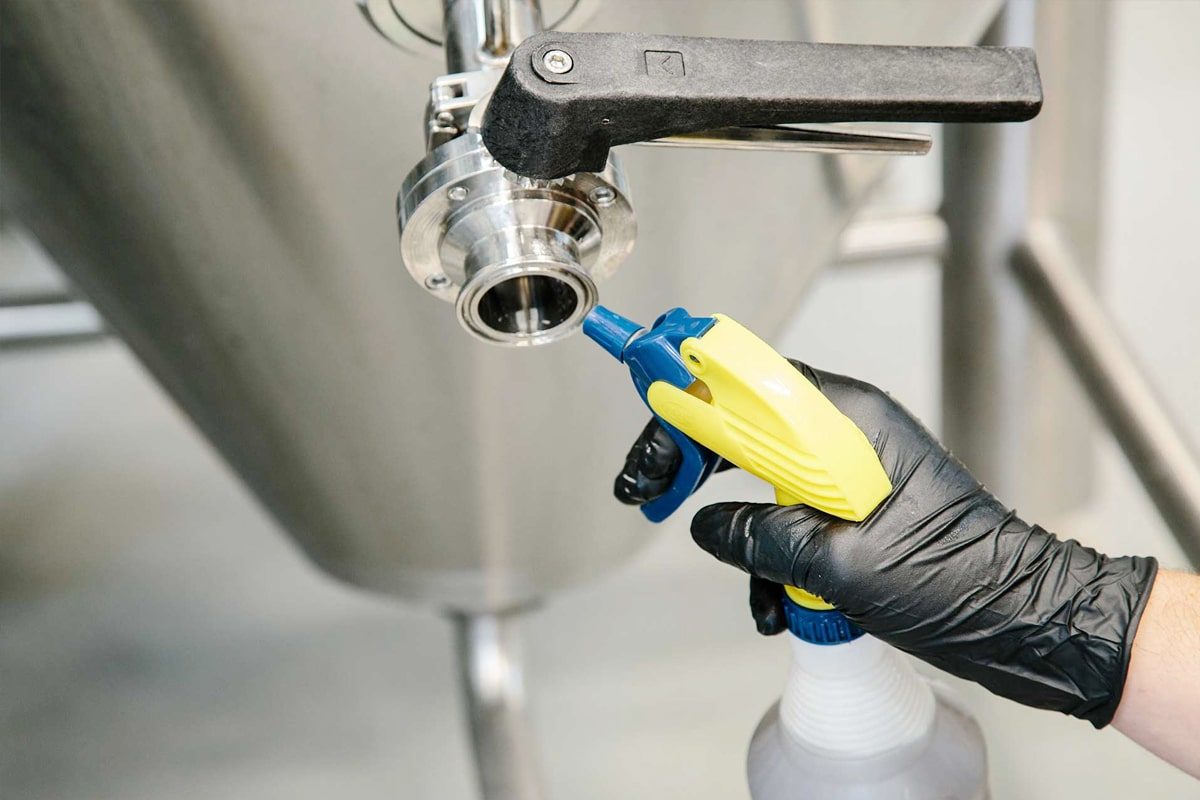
Safety Considerations in Brewery Equipment Cleaning
While the pursuit of cleanliness is paramount in the brewing world, it is equally essential to tread carefully along the path of sanitation. Safety considerations during brewery equipment cleaning are not merely a side note; they are a critical component of the process. From the handling of potent cleaning agents to ensuring the well-being of brewery personnel, a robust commitment to safety is integral to the success of any brewery’s hygiene practices. Let’s delve into the key safety considerations that brewers must prioritize:
Protective Gear
The use of appropriate protective gear is non-negotiable in brewery equipment cleaning. Personal protective equipment (PPE) such as gloves, safety goggles, and aprons shield brewery personnel from direct contact with cleaning agents. Selecting gear that is resistant to the specific chemicals being used is crucial for ensuring complete protection.
Ventilation
Adequate ventilation is a cornerstone of safety in the cleaning area. Many cleaning agents release fumes that can be harmful if inhaled. Breweries must ensure that cleaning spaces are well-ventilated to disperse potentially hazardous vapors. When working in confined spaces, additional precautions and ventilation measures should be implemented.
Training and Education
A knowledgeable workforce is a safe workforce. Providing comprehensive training on the safe handling of cleaning agents, the proper use of equipment, and adherence to safety protocols is imperative. Breweries should conduct regular safety workshops to keep personnel informed about potential risks and updates in safety procedures.
Chemical Compatibility
Brewers must be well-versed in the chemical compatibility of cleaning agents with specific materials and equipment. Some cleaning agents may react adversely with certain metals or surfaces, leading to damage or corrosion. Understanding these chemical interactions ensures that cleaning agents are selected with careful consideration for the materials being cleaned.
Emergency Response Preparedness
Despite meticulous planning, emergencies can arise. Breweries should have well-defined emergency response protocols in place. This includes the availability of emergency eyewash stations, showers, and first aid kits. Personnel should be trained on emergency response procedures, ensuring swift and effective action in the event of accidental exposure.
Labeling and Documentation
Clear and accurate labeling of cleaning agents is crucial for safety. Breweries should ensure that all containers are properly labeled with the name of the cleaning agent, usage instructions, and potential hazards. Additionally, maintaining detailed documentation of cleaning procedures and the chemicals used provides a valuable resource for reference and audits.
Handling Hazardous Waste
The disposal of used cleaning agents and other waste generated during the cleaning process must adhere to environmental regulations. Breweries should establish proper waste disposal protocols, segregate hazardous waste from regular waste, and arrange for safe disposal through authorized channels.
Continuous Risk Assessment
Safety is an ongoing commitment that requires continuous risk assessment. Breweries should routinely review and update their safety procedures, taking into account any changes in equipment, cleaning agents, or regulatory requirements. This proactive approach ensures that safety protocols remain robust and effective over time.
In navigating the complex terrain of brewery equipment cleaning, safety considerations are the guiding lights that protect both the personnel and the integrity of the brewing process. By prioritizing protective measures, education, and emergency preparedness, breweries can create an environment where cleanliness and safety coexist harmoniously. As we venture further into the realm of brewery hygiene, these safety considerations will stand as sentinels, ensuring that the pursuit of a pristine brew is achieved without compromising the well-being of those who make it possible.
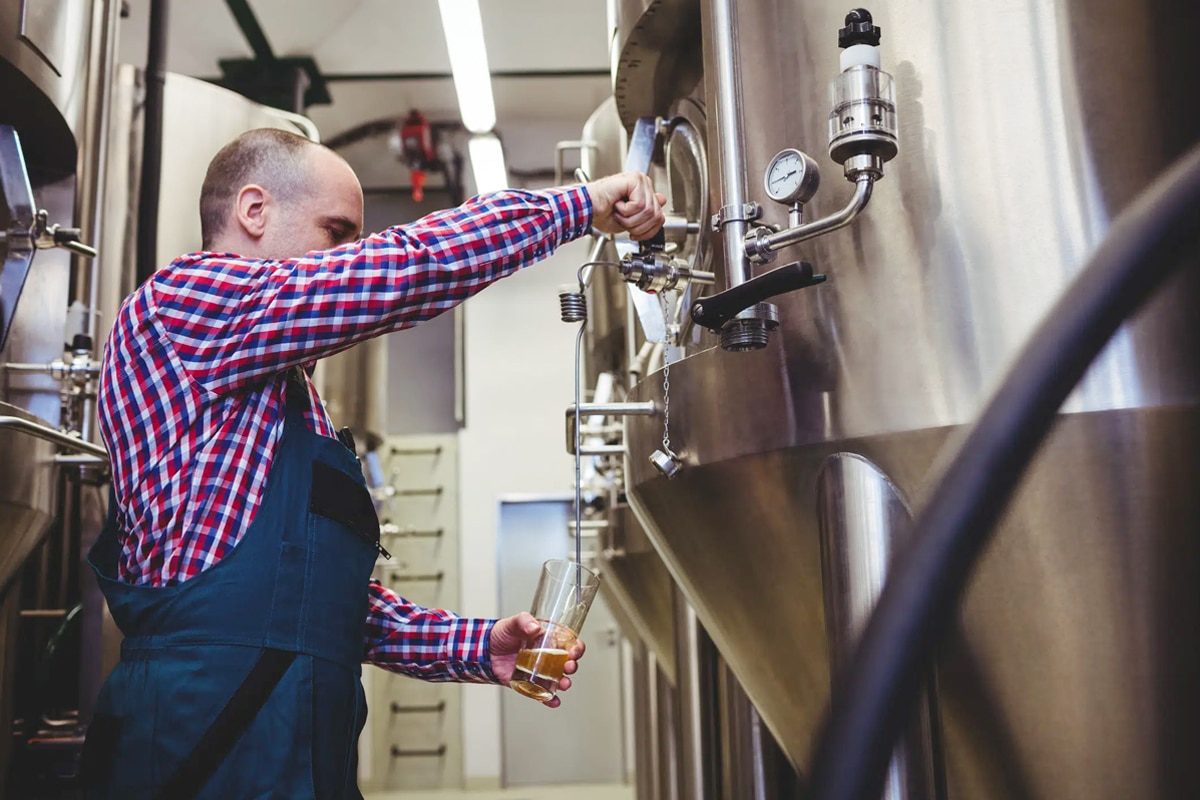
Quality Assurance and Documentation
In the dynamic world of brewing, where precision and consistency are paramount, quality assurance and documentation serve as the bedrock upon which success is built. From meticulous cleaning schedules to comprehensive record-keeping, breweries employ a multifaceted approach to ensure that equipment maintenance meets the highest standards of excellence. Let’s explore the critical components of quality assurance and documentation in brewery equipment cleaning:
Establishing Cleaning Protocols
Quality assurance begins with the establishment of robust cleaning protocols. Breweries should develop standardized procedures for cleaning each type of equipment, outlining the specific steps, cleaning agents, and frequencies. These protocols serve as a blueprint for maintaining cleanliness and consistency across all brewery operations.
Implementing a Regular Cleaning Schedule
Consistency is key to maintaining brewery hygiene. Breweries should implement a regular cleaning schedule that addresses the cleaning needs of each piece of equipment. Whether it’s daily, weekly, or monthly cleaning, adherence to a predetermined schedule ensures that cleaning tasks are not overlooked or delayed, minimizing the risk of contamination.
Conducting Routine Inspections
Regular inspections of brewery equipment are essential for identifying potential issues and ensuring that cleaning procedures are effective. Brewers should conduct visual inspections of equipment before and after cleaning, checking for signs of wear, damage, or residual contamination. Any discrepancies should be addressed promptly to maintain operational integrity.
Documentation of Cleaning Activities
Accurate documentation is the cornerstone of quality assurance in brewery equipment cleaning. Breweries should maintain detailed records of all cleaning activities, including the date and time of cleaning, equipment cleaned, cleaning agents used, and any observations or findings. This documentation provides a comprehensive audit trail and facilitates traceability in the event of quality control issues.
Validation of Cleaning Efficacy
Validation of cleaning efficacy is a critical component of quality assurance. Breweries should periodically validate their cleaning procedures to ensure that microbial and organic residues are reduced to safe levels. This may involve microbial swabbing, ATP (adenosine triphosphate) testing, or other analytical methods to verify the effectiveness of cleaning agents and procedures.
Calibration and Maintenance of Equipment
Calibration and maintenance of cleaning equipment are essential for ensuring accuracy and reliability. Brewers should regularly calibrate equipment such as pH meters, conductivity meters, and dosing pumps to maintain optimal performance. Additionally, routine maintenance of cleaning equipment helps prevent malfunctions and ensures consistent cleaning results.
Continuous Improvement Initiatives
Quality assurance is a journey of continuous improvement. Breweries should actively seek feedback from staff, monitor industry best practices, and incorporate lessons learned from quality control assessments into their cleaning protocols. By fostering a culture of continuous improvement, breweries can elevate their standards of cleanliness and efficiency.
Adherence to Regulatory Standards
Compliance with regulatory standards is a fundamental aspect of quality assurance. Breweries should ensure that their cleaning protocols align with local, state, and federal regulations governing food safety and hygiene. Regular audits and inspections help verify compliance and identify areas for improvement.
In the realm of brewery equipment cleaning, quality assurance, and documentation are not merely bureaucratic formalities, they are the guardians of brewing excellence. By adhering to rigorous standards, implementing robust cleaning protocols, and maintaining meticulous records, breweries can uphold the integrity of their operations and deliver consistently exceptional brews to their customers. As we navigate the intricacies of brewery hygiene, quality assurance, and documentation serve as guiding principles, ensuring that every step taken in pursuit of cleanliness is a step toward brewing perfection.
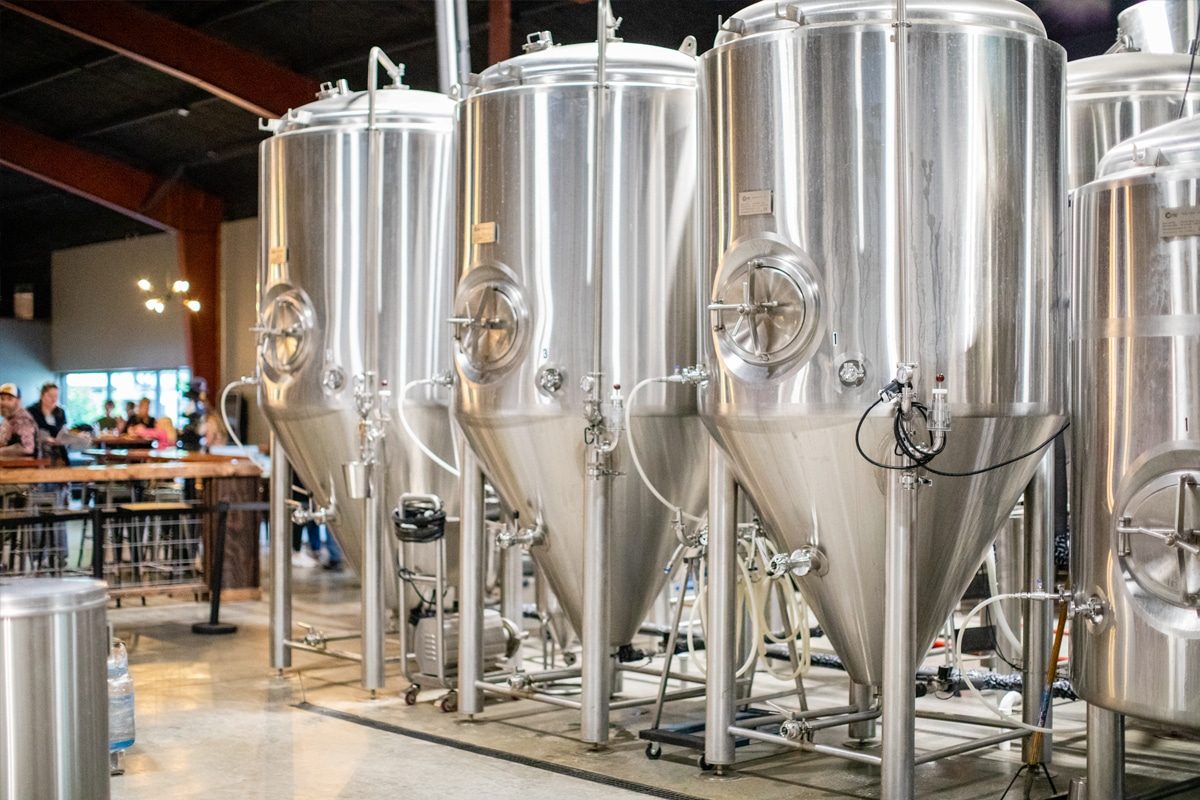
Summarize
In the intricate dance of crafting exceptional beer, the significance of maintaining impeccable brewery equipment cannot be overstated. From the towering fermentation tanks to the smallest valves, the cleanliness of each component is the bedrock upon which the art and science of brewing rest. As we navigated through the diverse landscape of cleaning agents, from the potent efficacy of alkaline and acid cleaners to the precision of enzymatic solutions, the importance of tailored cleaning techniques for specific equipment emerged. Safety considerations acted as vigilant guardians, ensuring the well-being of both personnel and the brewing process. Quality assurance, coupled with meticulous documentation, serves as the compass guiding breweries toward sustained excellence. In the journey toward the pinnacle of brewing, where every sip is a testament to craftsmanship, the commitment to pristine hygiene stands as the unwavering promise to enthusiasts and connoisseurs alike: that each beer is a masterpiece, meticulously crafted from a canvas of immaculate brewery equipment.
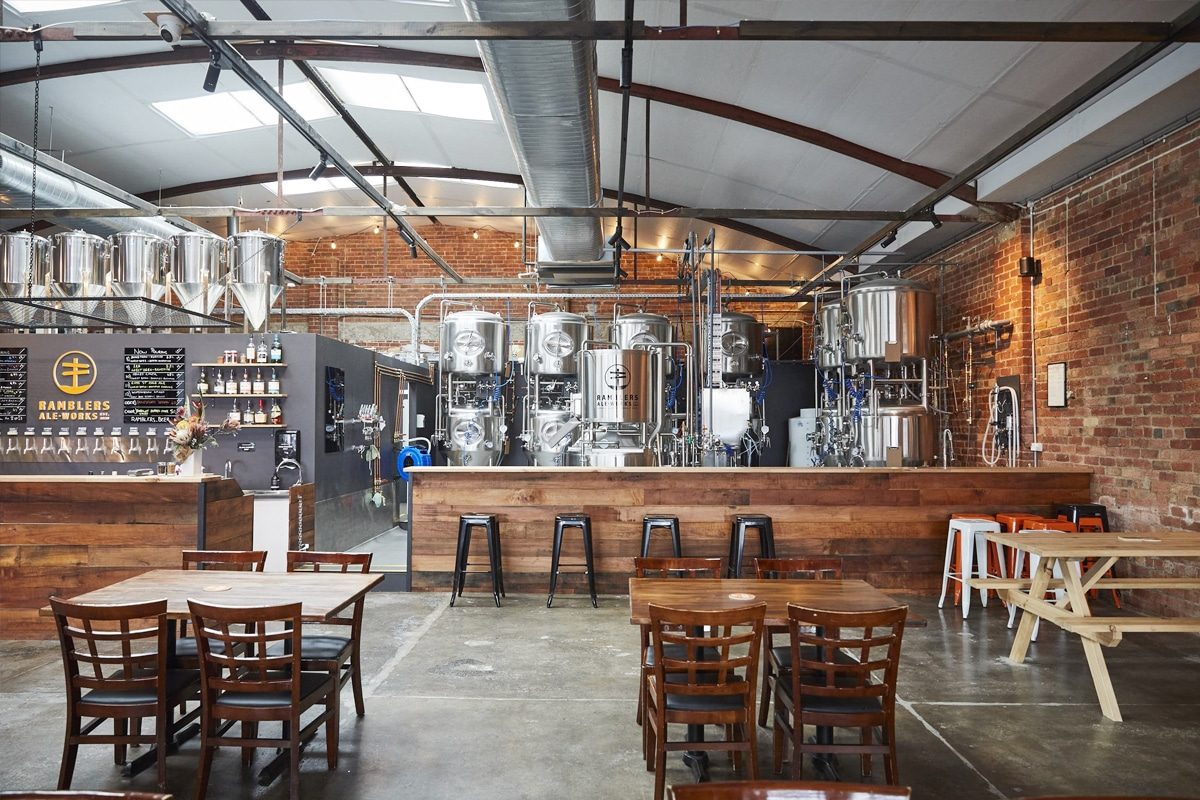
Get A Turnkey Brewery Solution
Ready to take your brewing operation to the next level? Look no further than our turnkey brewery solutions. Our comprehensive packages are designed to streamline the process of setting up and maintaining a brewery, from equipment selection to installation and ongoing support.
With our turnkey solutions, you’ll have access to a wide range of high-quality brewery equipment, carefully curated to meet your specific needs and budget. Whether you’re a seasoned brewmaster or just starting your brewing journey, our team of experts is here to guide you every step of the way.
Contact us today to discuss your brewery project and receive a customized quotation tailored to your requirements. Let us help you turn your brewing dreams into reality with our turnkey brewery solutions.



